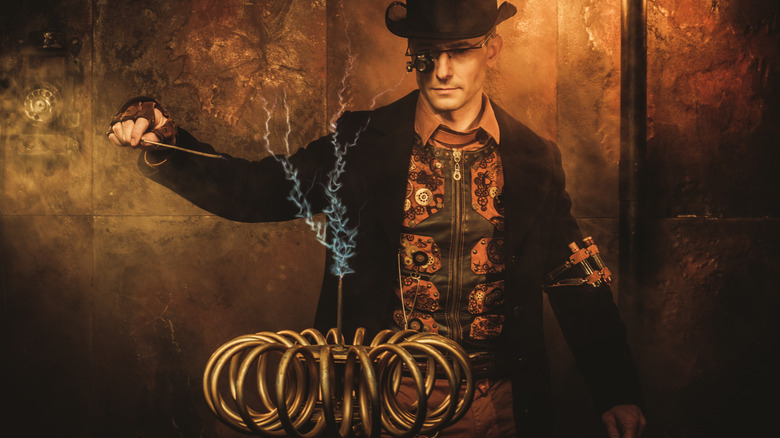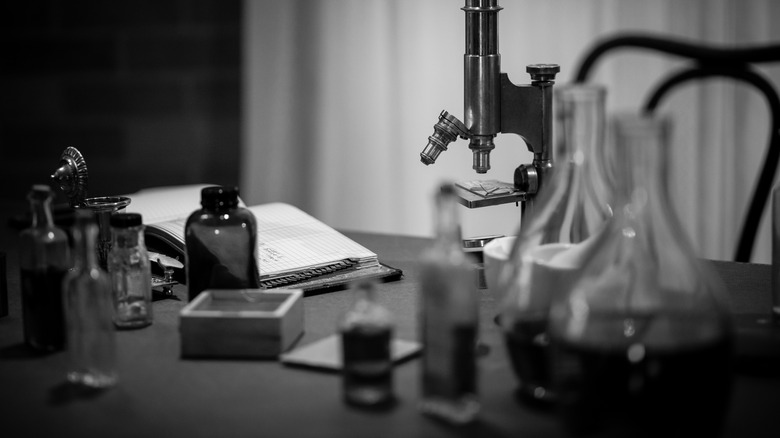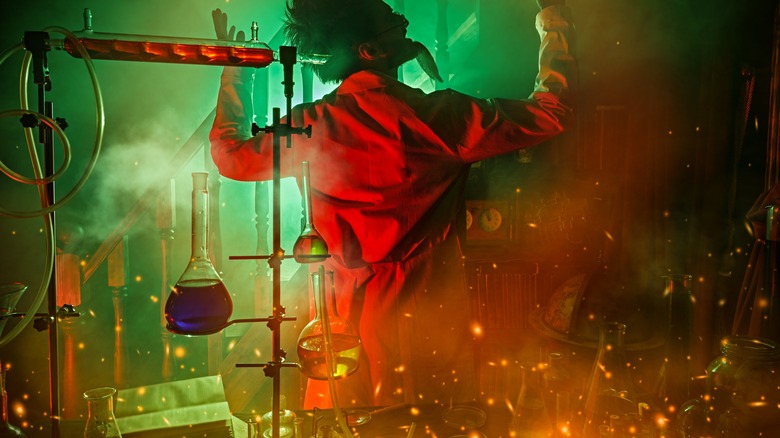How Andrew Crosse Went From An Amateur Scientist To Victor Frankenstein
While Mary Shelley's 1818 novel Frankenstein seems like a work of complete fiction, a 19th-century scientist had many questioning if man could create life from scratch. Andrew Crosse was a scientist who had a fascination with thunder and lightning, so much so that he was nicknamed "the thunder and lightning man." He went by other nicknames as well, including the "Wizard of Broomfield" and the more blasé title, "the electrician" (via National Trust).
His work brings to mind the shadowed laboratories and explosive revelations of early science fiction, but that may be no coincidence. It's said that in 1814, Mary Shelley attended a lecture of Crosse's along with her husband Percy Shelley. In the lecture, Crosse framed lightning as an omnipotent tool, implying that its controller could have God-like command over natural forces. It's easy to imagine the spectacular claims lingering in Shelley's mind when she put pen to paper later on; and if they did, it would make Andrew Crosse the real-life Dr. Frankenstein (via The Conversation). Furthermore, an experiment he conducted later in life may have even resulted in the creation of life, per Mysteries Unsolved.
Andrew Crosse's Life and Work
Born in 1784, Andrew Crosse had wealth from the beginning which helped enable his career path. In 1805, he inherited Fyne Court in Somerset, England which he transformed into a laboratory in order to delve into the new science of electricity. His inheritance also went toward the tools he'd need for his experiments. He built a register that measured electrical charges in all atmospheric conditions, including thunderstorms, and he used a web of copper wires attached in trees and entwined with 50 Leyden jars that sat in Fyne Court's old music room. Using an insulated rod, he sent electricity into a battery or away from it altogether. This stunned his visitors, who saw his demonstrations as a kind of magic (via The Conversation).
Although his science looked like wizardry to common folk, Crosse was a respected member of the London Electrical Society where he knew other pioneering scientists and inventors. His esteem led to the 1814 lecture at Garnerin's London lecture rooms which Mary Shelley noted attending in her journal. His bold claim that he had controlled lightning was somewhat blasphemous for the time, but he would later make an even more striking claim.
A Thunderous Experiment that Created Life?
In 1837, Andrew Crosse became interested in experimenting with electro-crystallization, a process by which crystal formation is influenced by electricity. During the course of his experiment, something unusual manifested seemingly out of nowhere: life. The experiment involved a mixture of silicate of potassa, hydrochloric acid, and water, which were trickled onto a porous rock while wires attached to a battery ran electricity through it. His goal was to create crystals of silica, but he failed in this endeavor (per Mysteries Unsolved).
What he did find were small, white creatures budding from the electrified rock. He first noticed them on the 14th day of his experiment, and noticed continual growth until, on day 28, they left the rock and wandered about the area. A stunned Crosse brought the insects to the attention of entomologists, some of whom said they were a known mite species called Acarus. Other scientists believed they didn't belong to any species known to science. Crosse replicated his experiment with the same results over the years, but he could never explain if or how the mites grew from the electrified rock.


